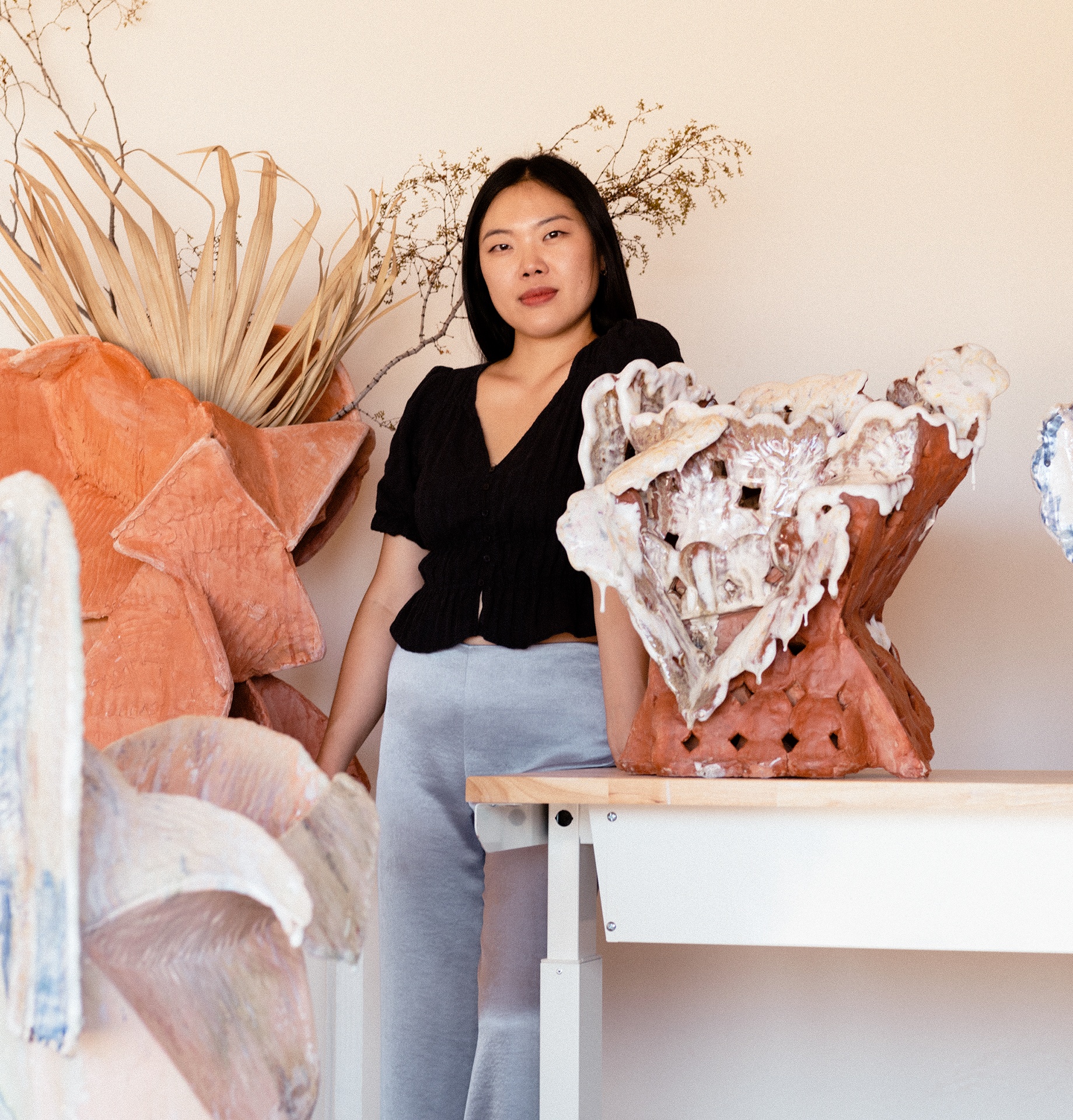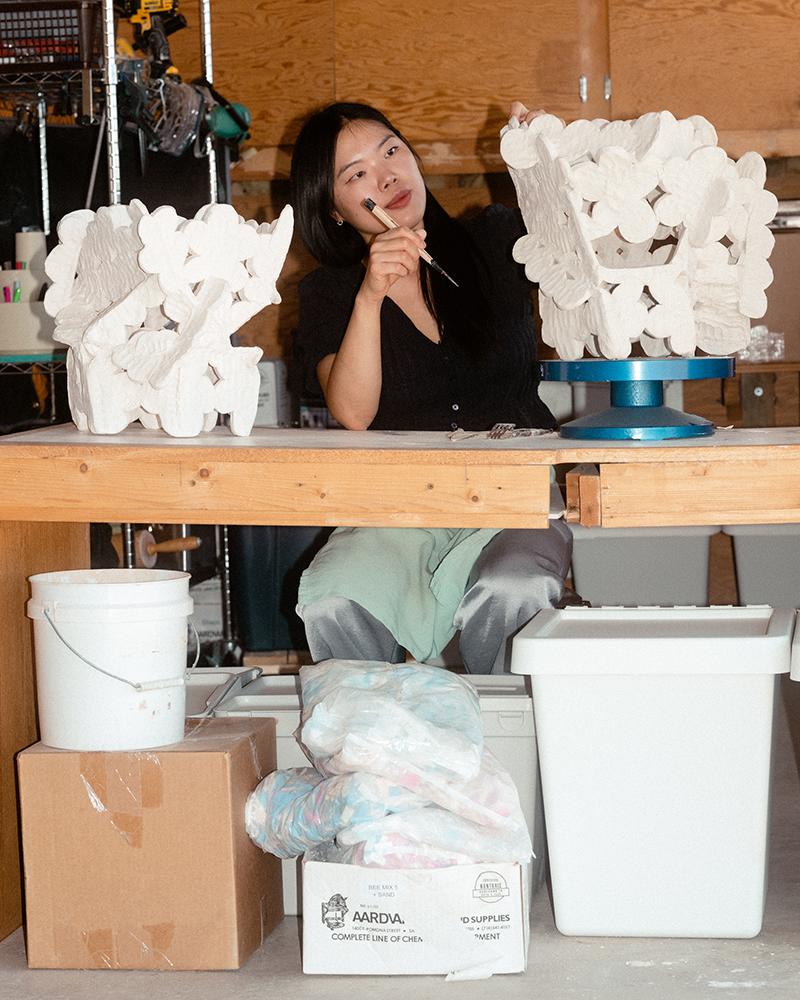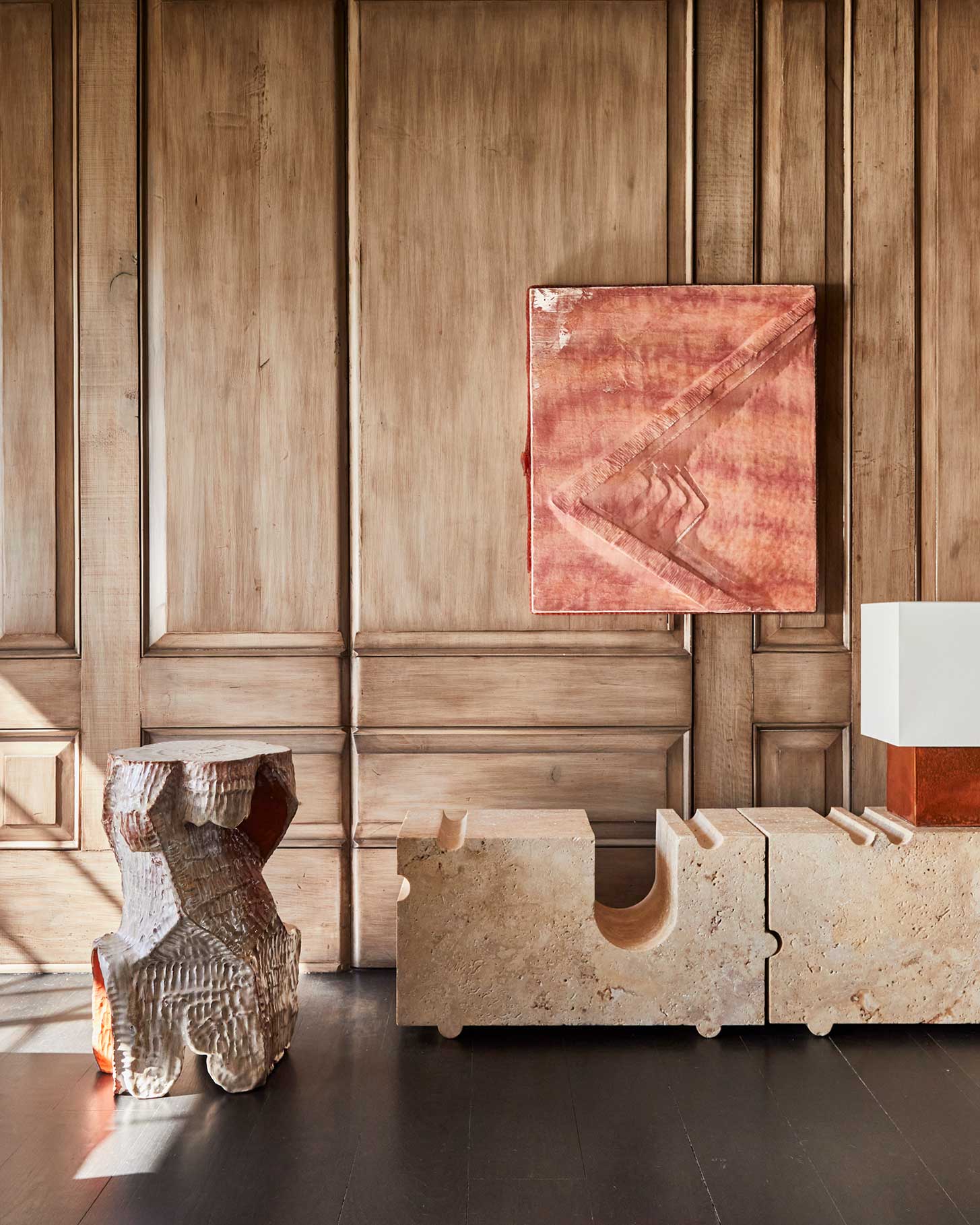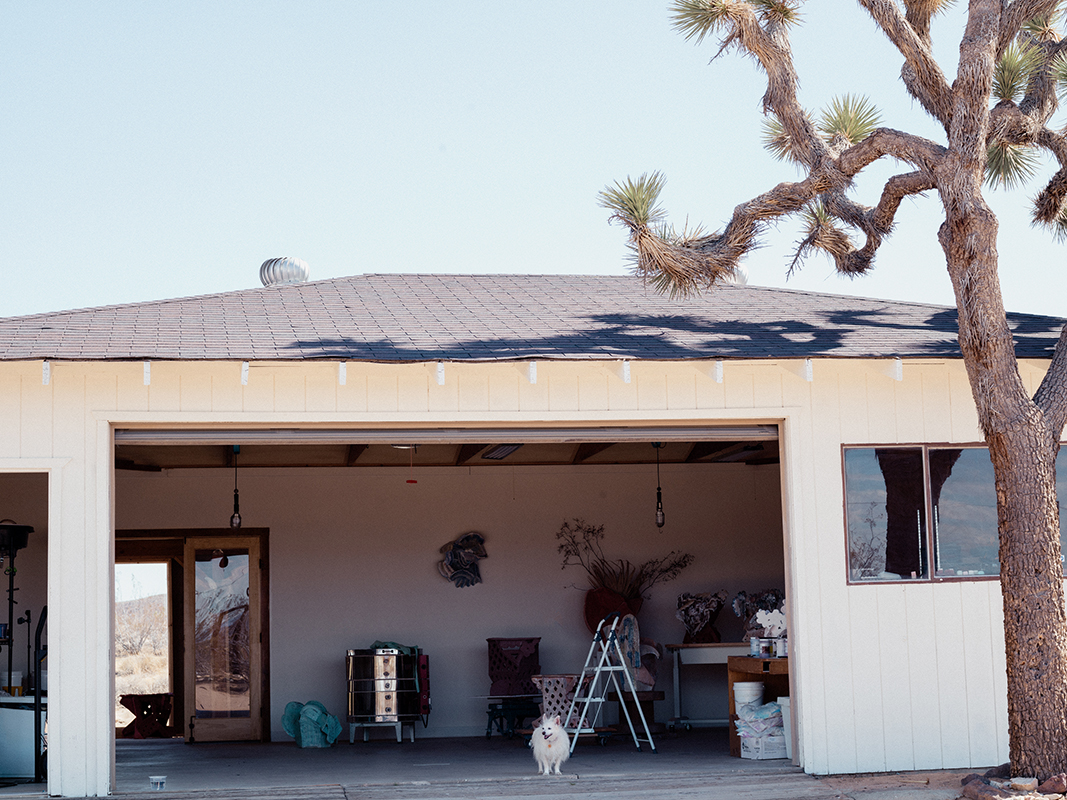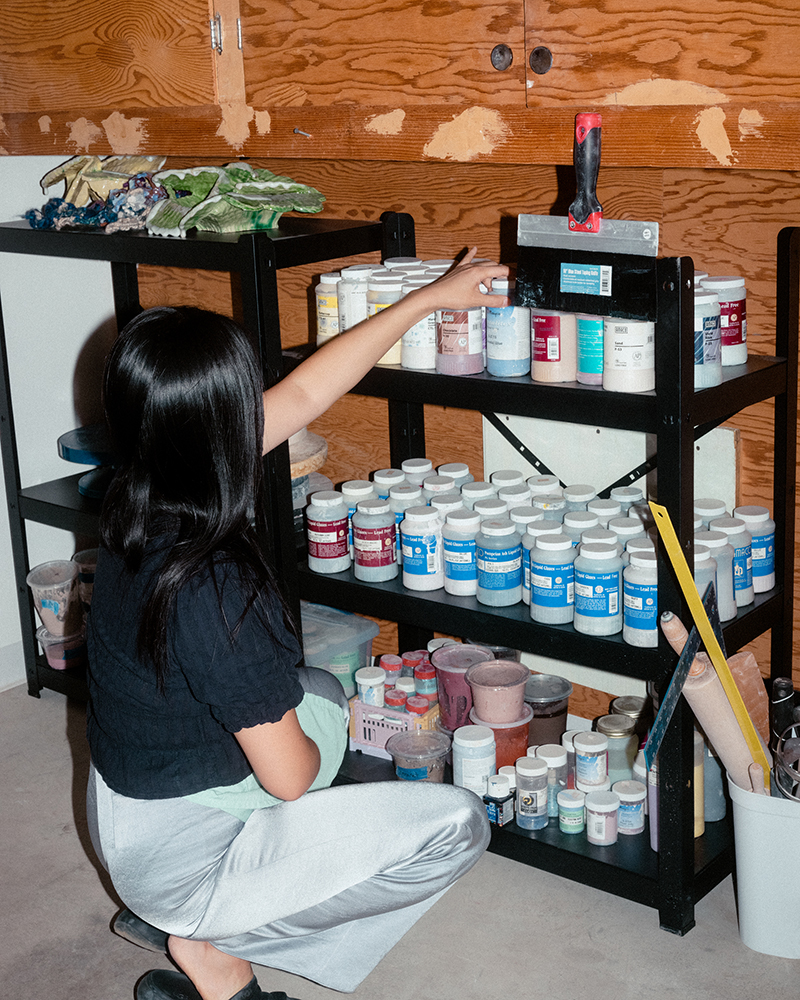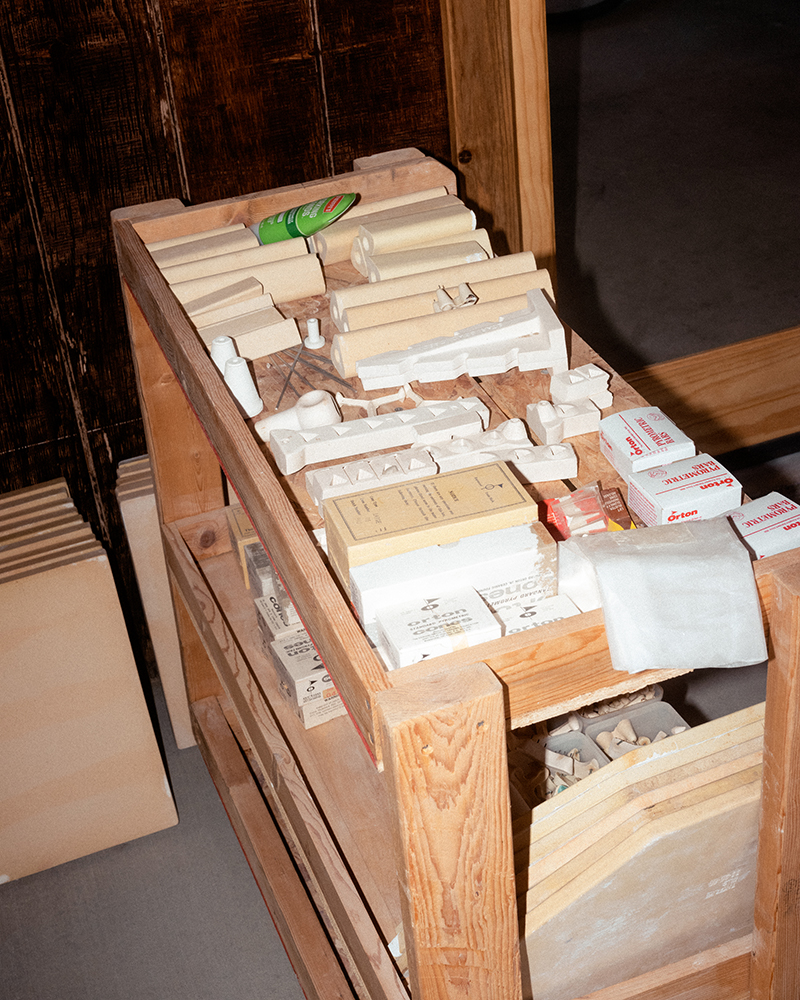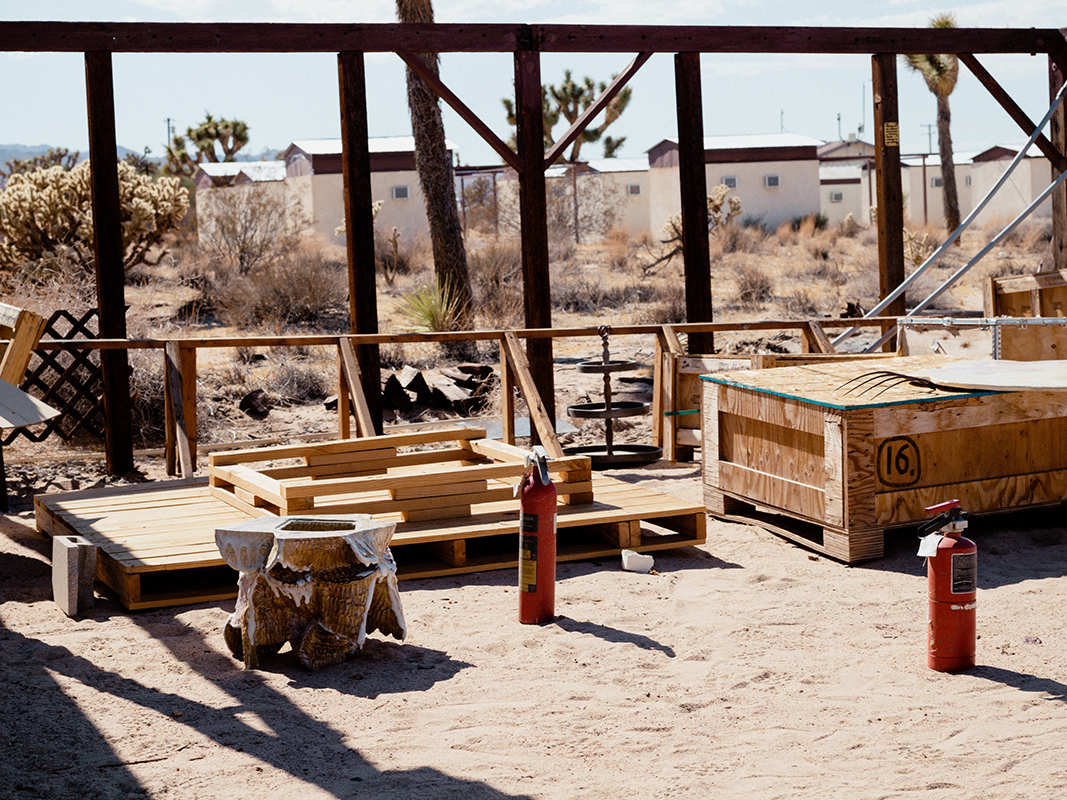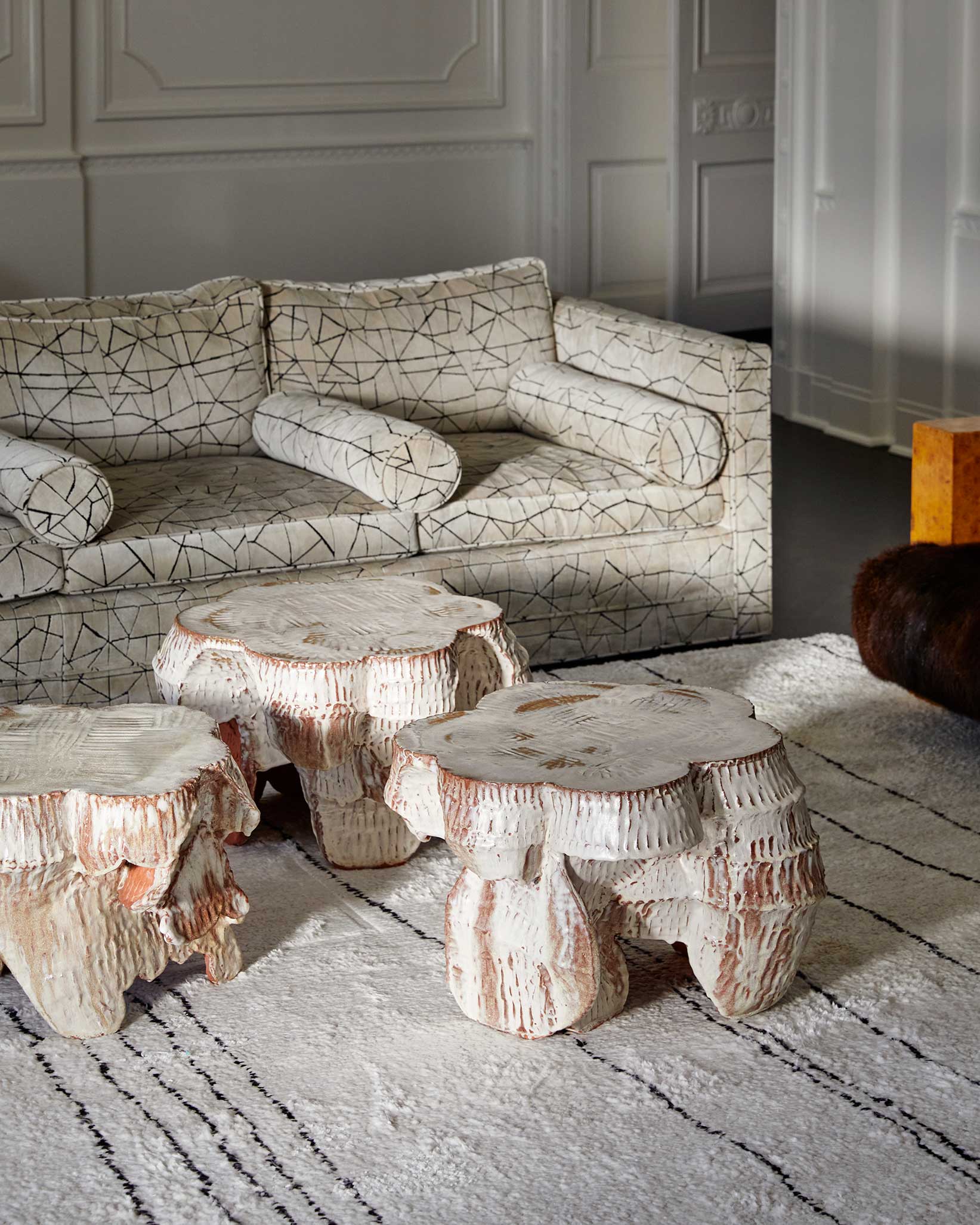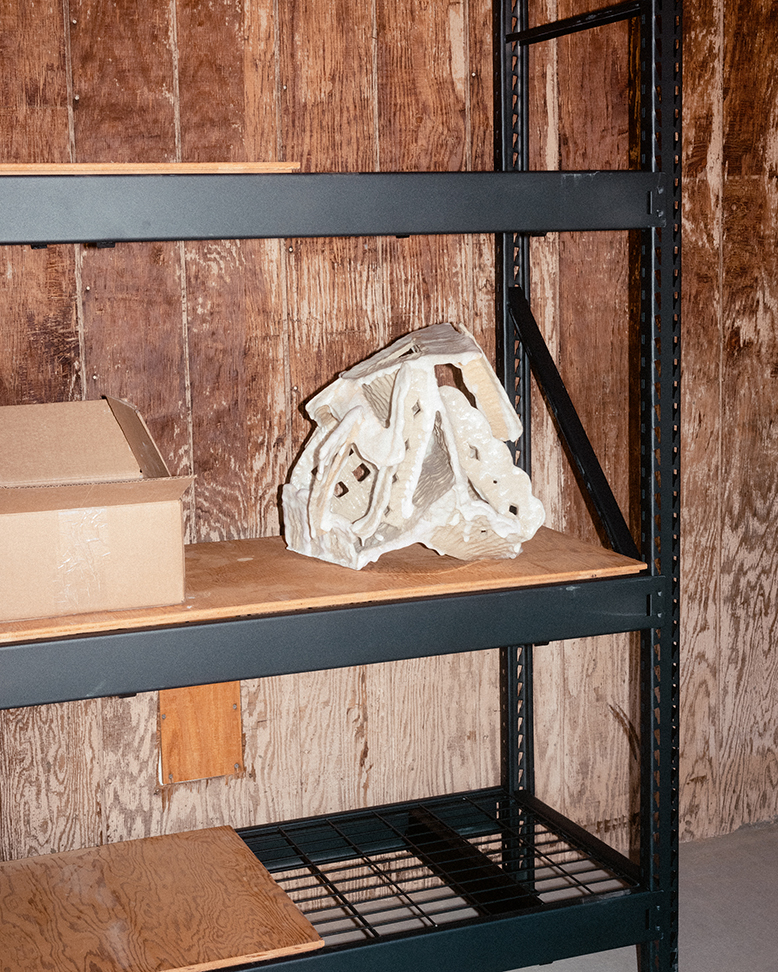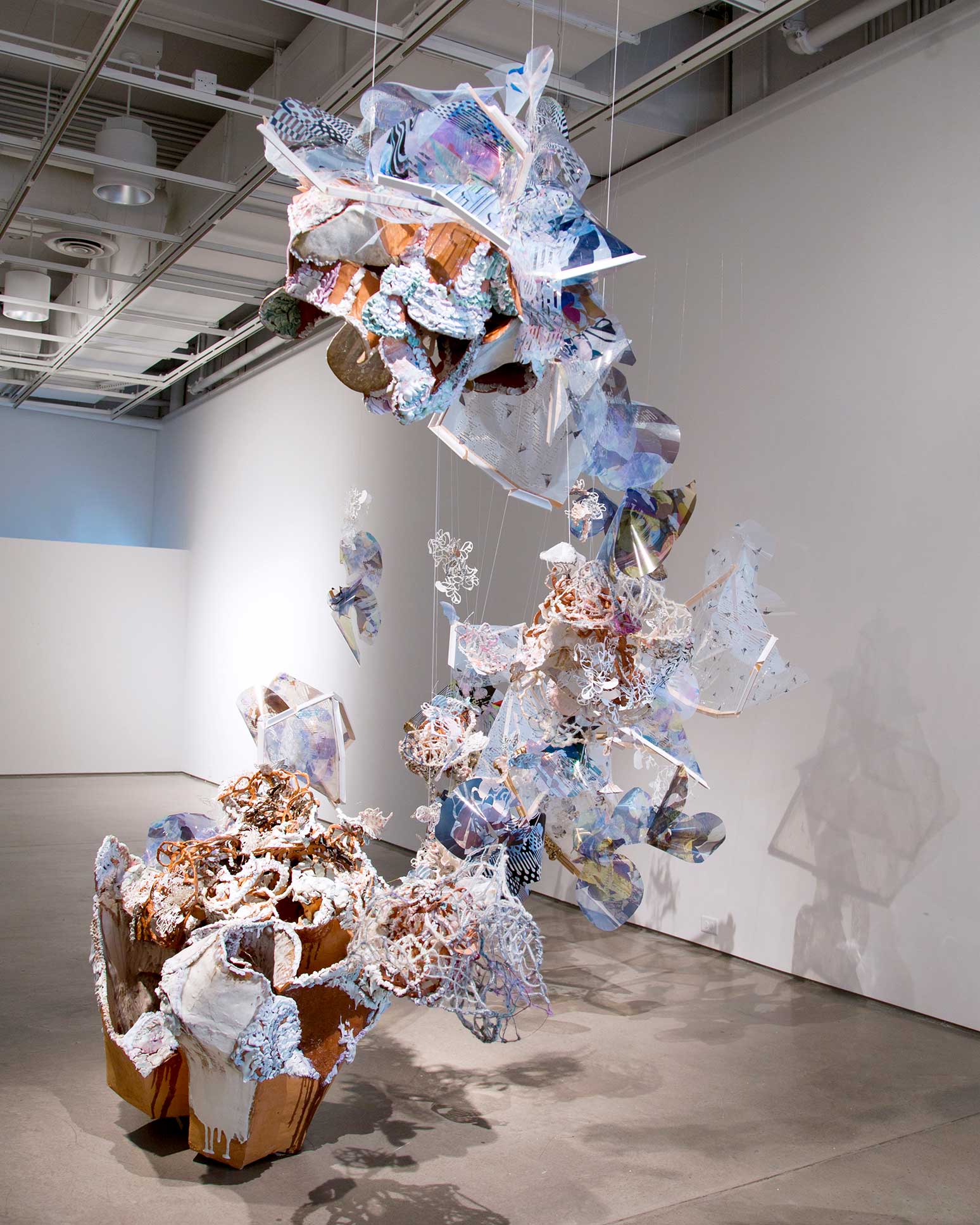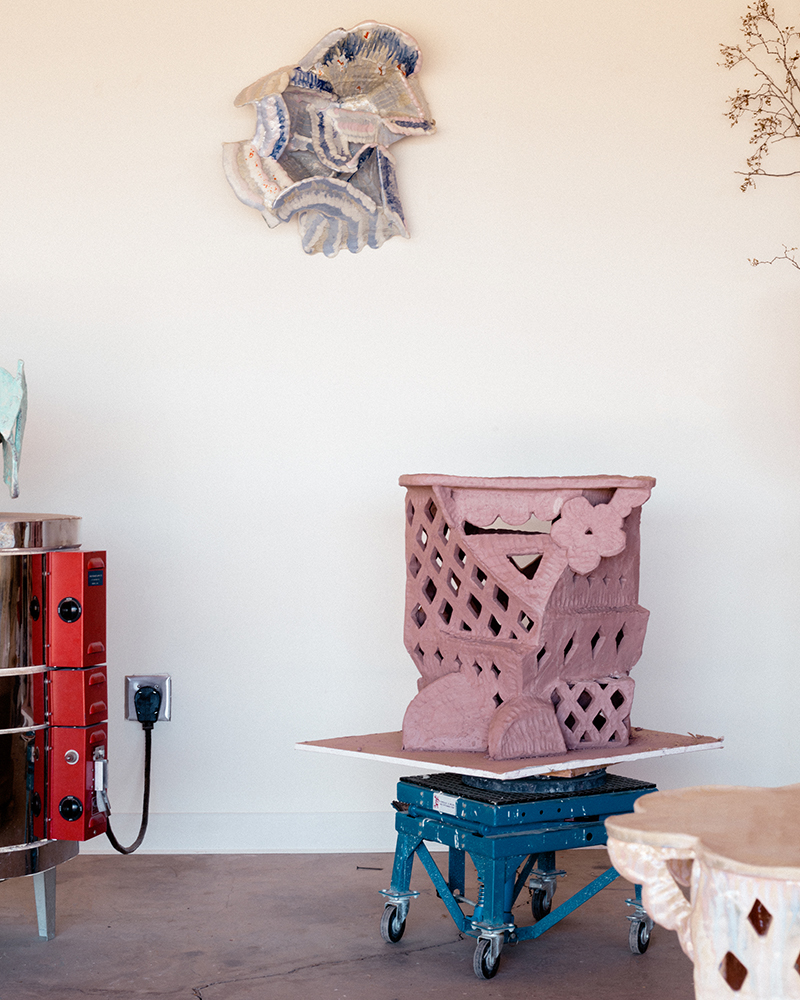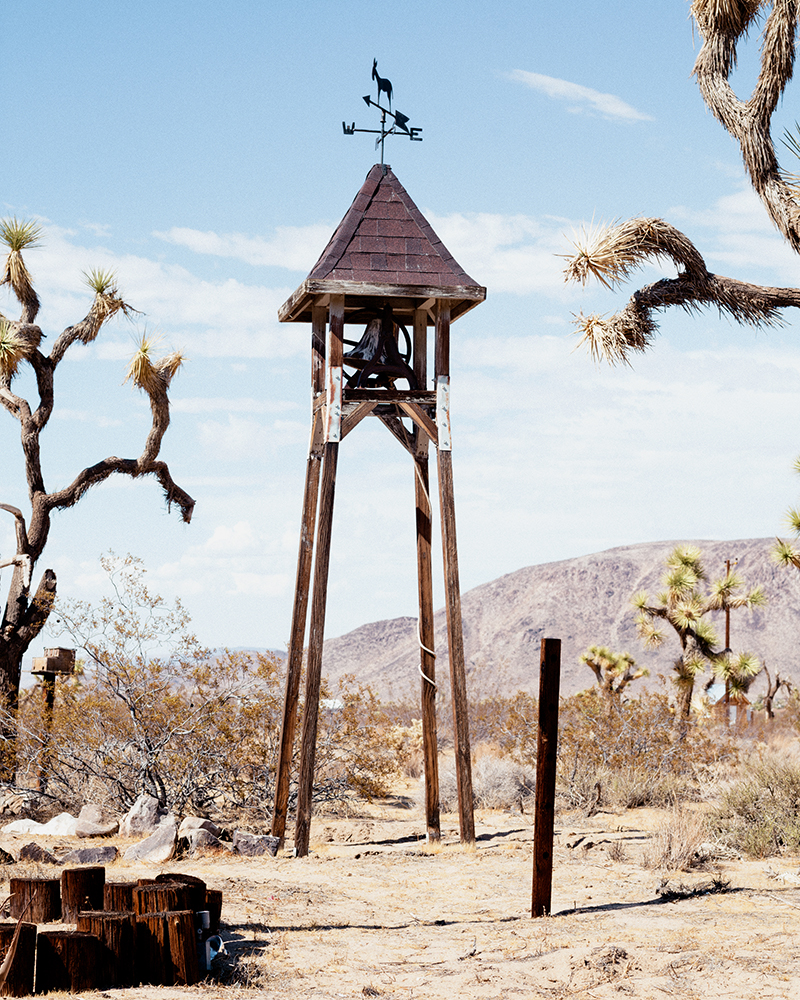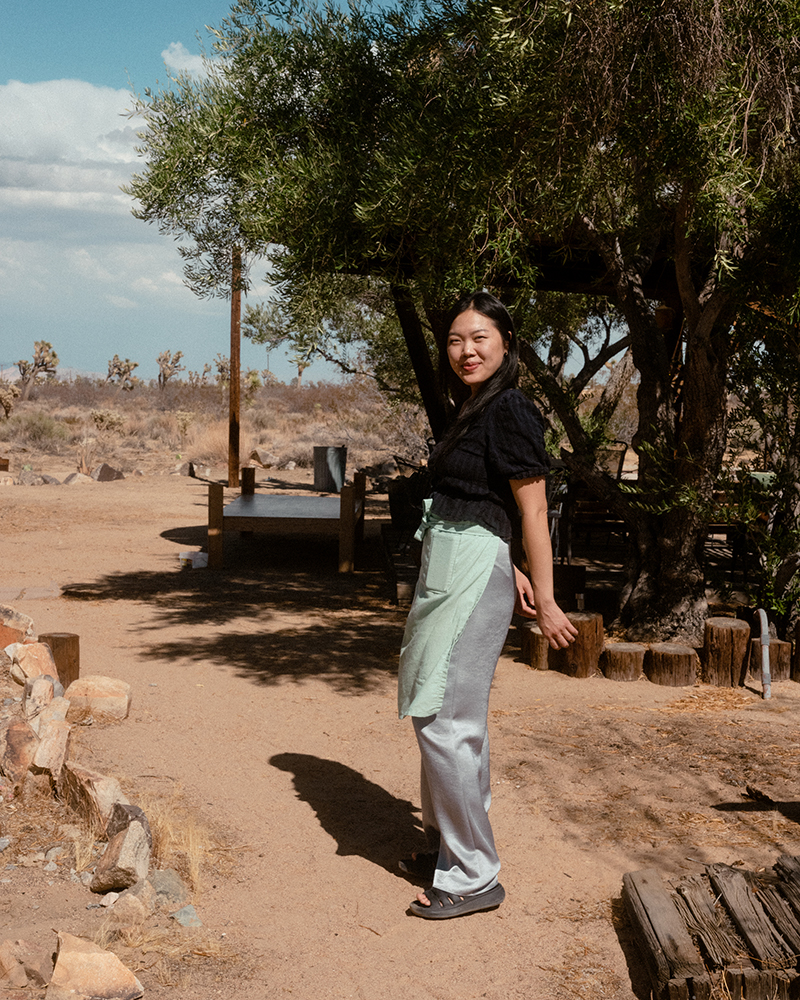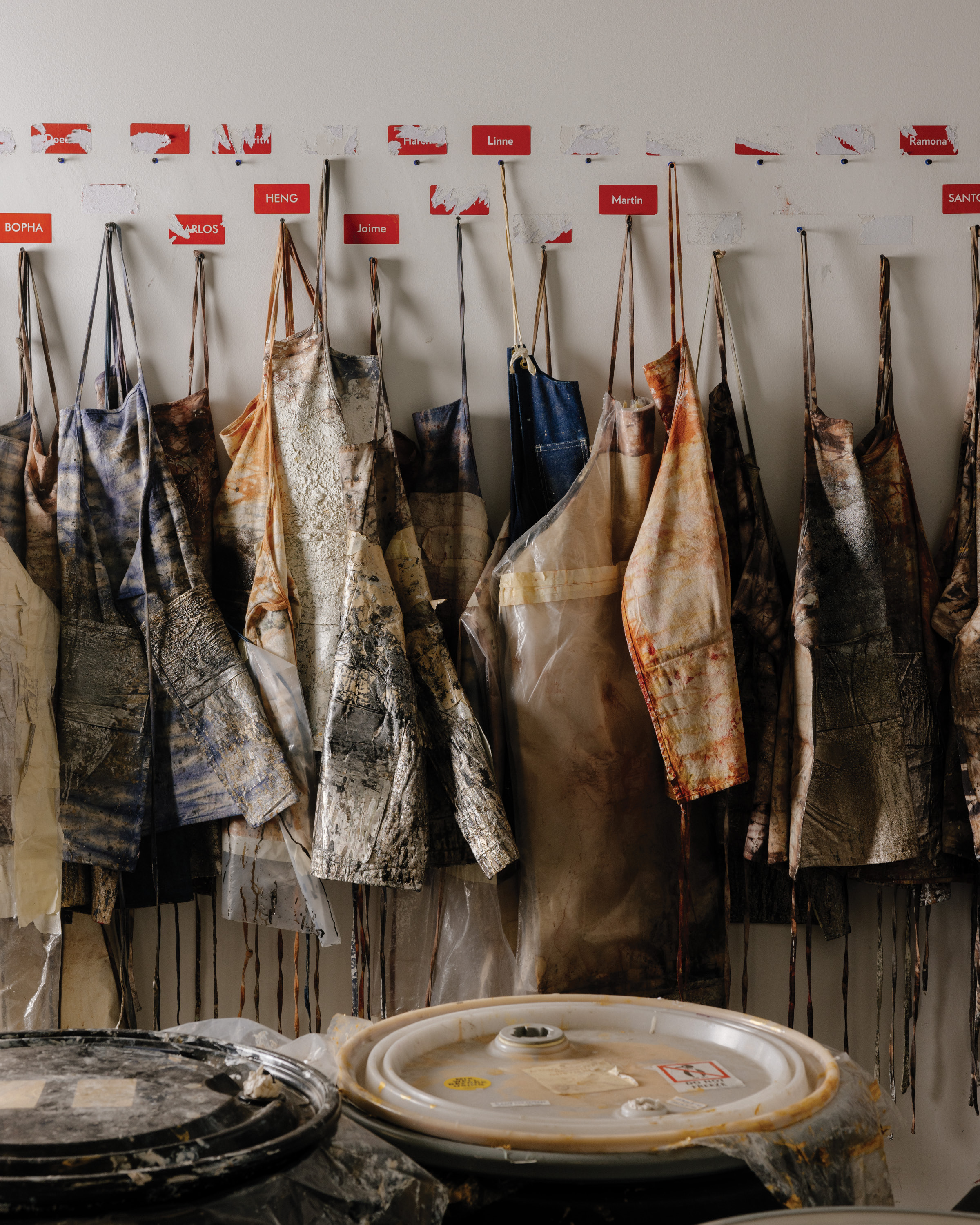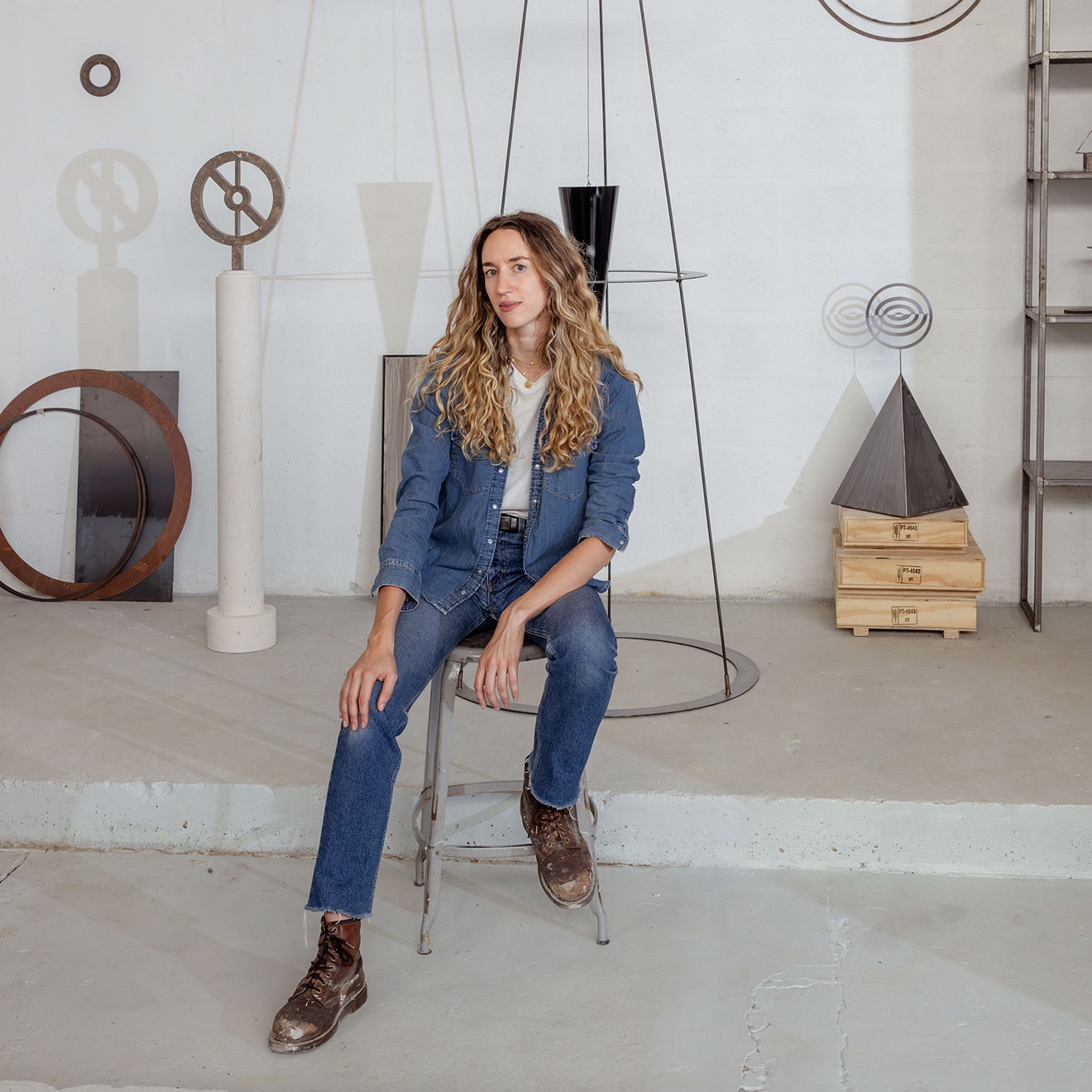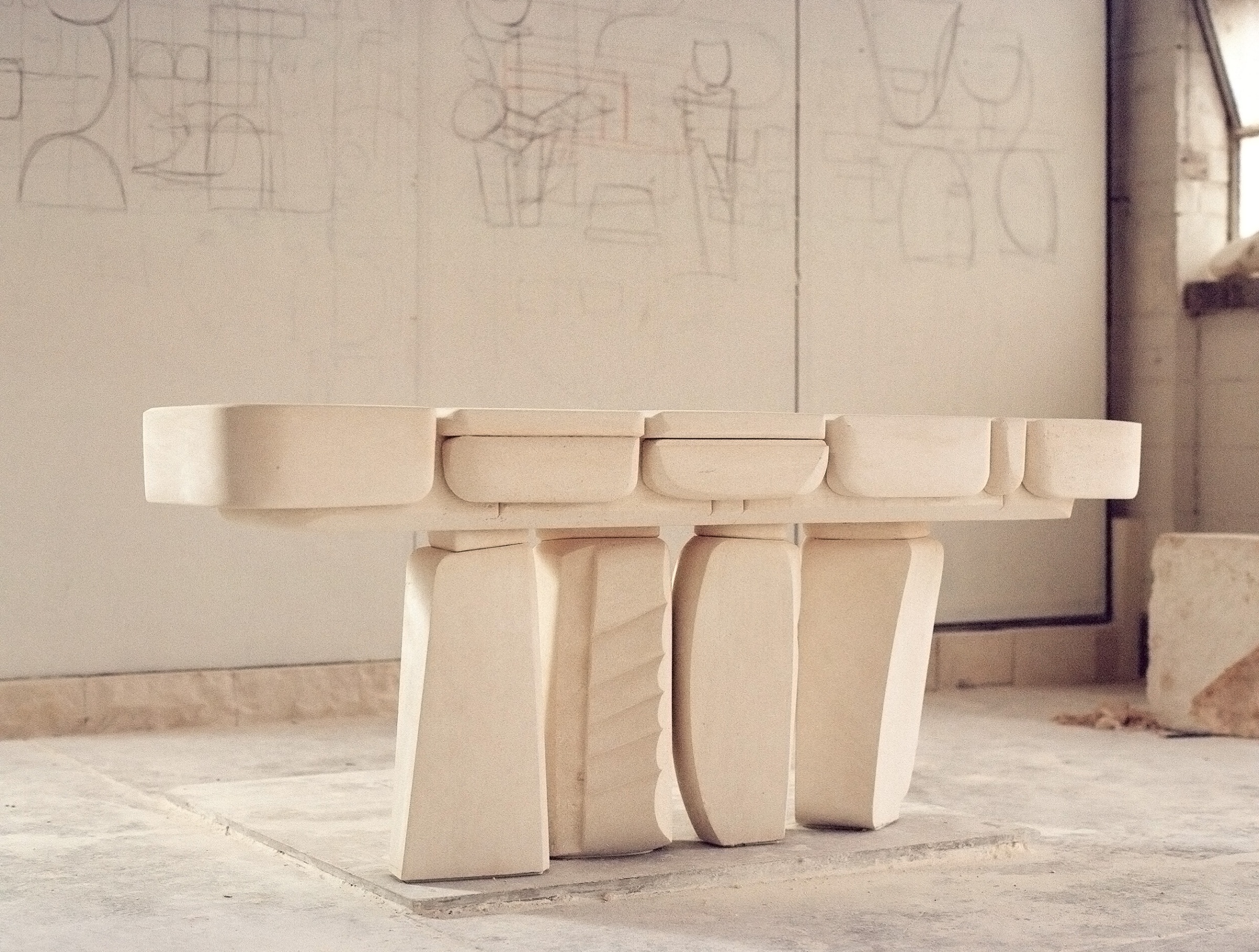It’s 2am in Korea when YehRim Lee sits down at her computer to talk with us. The Seoul-born ceramic artist most recently moved to Joshua Tree but is back home for an upcoming art event. She’s looking forward to meeting new people and showing her work, but she’s nervous, too. It’s been a busy year for the artist.
“As a young artist every step is nerve-racking and exciting at the same time,” she says.
Perhaps the biggest break in YehRim’s career happened recently, when mega designer Kelly Wearstler found her work on Instagram. Kelly has designed for everyone from Gwen Stefani to Art Basel and is now a household name across books, décor, furniture, lighting, and more. Their collaboration began when YehRim was asked to design a terra-cotta collection exclusively for Kelly Wearstler Gallery. The final result shows off the unique qualities of terra-cotta stone in a series of sculpturesque table and wall art designs.
We recently sat down with the artists on a video call to chat across time zones about collaboration, inspiration, and how family has influenced their art. The work of YehRim’s father, artist Kang Hyo Lee, fills the shelves behind her as we talk. —Laura Rote
- YehRim glazes a new terra-cotta work. “I fire and re-fire, introducing glazes each cycle, stopping only when the material starts to crack and warp.” Photo by Amanda Hakan
- YehRim designed the “Terra Drinks Table Collection” seen at left combining traditional Korean onggi craftsmanship with special glazing techniques. Photo courtesy of The Ingalls
Kelly: Since you’re home, tell me what you were like as a kid growing up around art.
YehRim: Clay was part of my everyday life growing up. My mother is a ceramic artist, too. My parents would be working in the studio while I was running around, but I was too young to understand what they were doing.
K: Your father’s work is really beautiful. Does he work primarily with neutral colors?
Y: This is onggi, which is a Korean traditional jar. He’s really focused on the traditional Korean aesthetic, like mono colors on the pot base. My work reinterprets his in a way.
K: That’s amazing. You’re carrying on the legacy. How did you get started? How did you end up in the States?
Y: After undergrad in Korea I studied at California State University, Long Beach. I was there a year to prepare my portfolio. I found my voice in California. The professor there was really helpful because I was a little confused, having this tradition and this amazing history, but he encouraged me to explore my own ideas and aesthetics. Then I got my MFA in ceramics in upstate New York.
- YehRim moved to Joshua Tree with her husband, a poet, in late 2022. Photo by Amanda Hakan
K: When did you move to Joshua Tree? How was that transition?
Y: Between grad school and Joshua Tree I did a lot of residencies. I was a visiting artist at the University of Georgia in the ceramics department (2017 to 2018), the University of the Arts (2018 to 2019), and the Clay Studio in Philadelphia (2018 to 2020). I went to Archie Bray in Montana (a foundation for the ceramic arts just outside of Helena). I felt like my work fit more in California, so I came back to California.
K: Do you love living in Joshua Tree?
Y: I’m still adjusting [laughs]. This is my first summer here. We had a really wonderful winter; it was beautiful. Now it’s so hot.
- YehRim settled in Joshua Tree after a number of residencies all over the US. Photo by Amanda Hakan
- YehRim’s tools in her new Joshua Tree home and studio. Photo by Amanda Hakan
K: It’s so hot! But you guys have a really long, mild winter, which is nice. And there is so much inspiration, so much imperfection there, and of course the landscape. I see how that can be really inspiring to your work.
Y: We’ll have been here for a year in October. I live with my husband. He’s a poet. His main job is teaching, and his university is based online so he can work remotely.
K: You guys are both like poets because you’re a ceramic poet.
Y: Right, clay’s my language, and he’s working with words.
K: When I discovered you on Instagram I was so attracted to your work; we bought an existing piece of yours for a residential project. I just love the silhouette, and all the pieces are truly unique. You have these really beautiful glazes, but there’s also this beautiful textured quality to the work. You have these works of art and then small tables, and I know you’re experimenting with different things; what are some of your favorite types of pieces to work on? Are you working with another color story and technique?
- On a sweltering day in the California Desert, YehRim’s works are on pause in the yard. Photo by Amanda Hakan
Y: First, thank you for finding me. As an artist I’m really honored to be found by an amazing person like you.
But yes, today I’m more interested in functional pieces, like what we are working on together—what you chose—because my work was developing differently depending on where I was located. My work was installation-based when I first came to the US. I did more contemporary fine art I carried all my material with me and traveled the United States to do exhibitions. I’ve lived in the US 10 years and now, so I’m thinking more about stability and space in my home.
It was really good timing when we started working together because I was thinking about function a lot. I was starting to be interested in terra-cotta and silver glaze. Your idea of making drink tables opened my eyes more toward function and use. Right now I’m very interested in ceramic furniture and sculptural vessels.
- YehRim’s drinks tables for Kelly Wearstler. Photo courtesy of The Ingalls
- YehRim’s works take inspiration from her father and traditional Korean crafts. Photo by Amanda Hakan
K: When we purchased the piece for our client and then commissioned you for the gallery I remember we were shooting your pieces and putting them together and they looked so beautiful. Somebody can use these pieces in repetition because they’re all different; they all have their own individual voice and spirit, but they also work so beautifully together. You could put three tables together, and it really looks amazing, instead of having just one coffee table. It’s a little more interesting because it helps break the scale.
I’d love to work with you on a really great statement chair, something that could be at the entry of a house, or some sort of bench. A lot of our clients love things that are functional.
“I always like to develop in opposite materials, for example, porcelain or terra-cotta. I love the color contrast.”
Y: That’s really good to hear because you see so many furniture pieces working with so many different spaces. You have that insight. It’s always helpful to talk with someone who has that great experience.
K: We get a lot of data from our clients because we present so many different things to them. A lot of clients, even though they have very individual tastes, like a lot of the same things. It’s things that are really unique, not too specific. People love things that have a story, and you have such an amazing story with both your mom and dad as ceramic artists. It really is special.
Y: Thinking about what inspires me, when I see your work I see a lot of dimensions—the color layering, texture layering, pattern layering. I’ve always been interested in that, and thinking about the layers of myself was how I found my voice when I moved to the US.
- “Shopping Spree, 2017,” print on acetate film with terra-cotta for the Fosdick-Nelson Gallery at Alfred University. Photo courtesy of YehRim Lee
- A new work awaits its next step. Photo by Amanda Hakan
K: So many different artists and creatives really get fuel from their environment and how they grew up. It’s really interesting to see where YehRim is now, her trajectory and how she was surrounded by ceramics at a young age. When I was young, like 5 years old, I can remember my mom dragging me to flea markets and auctions. At a very young age, you’re not aware of it, but you’re really educating your eye. You’re developing your story kind of unknowingly, and it’s really interesting. You have that story as well.
In terms of some of your new designs, YehRim, I know you’re working on some vessels similar to the tables. Are you looking at working with other types of ceramic or different glazes?
Y: I always like to develop in opposite materials, for example, porcelain or terra-cotta. I love the color contrast.
K: I love collaborating and working with different artists for the gallery and also working with artists to do things maybe they haven’t done before. I’m really excited about doing this chair or some sort of bench. I know there are limitations with scale, but even if there’s a series of three small benches that can come together to create one; I think that’s the beauty of when we assembled those tables. It wasn’t one; it was three coming together. I love your use of repetition. It’s really nice.
Y: I can’t wait to try the benches. That sounds really amazing.
- YehRim finds inspiration in the imperfections of the landscape around her home in Joshua Tree. Photo by Amanda Hakan
- She had moved to that area hoping for wider exposure to her work, and then Kelly came across her beautiful pieces on Instagram. Photo by Amanda Hakan
K: We’re also working on a hotel project in Lake Tahoe. We’re assembling a great group of artists to work on the project, and we really want to commission you to do a piece there. I’m really excited to continue to work with you and develop these really amazing pieces.
Y: I can’t wait. That would be a great experience for me. It’s like we get to brainstorm together.
K: What is a dream project you think about working on? I get asked that question a lot, so it’s nice to be on the other side [laughs].
Y: My dream is to fill a room with my work—a table, bench, sculptural vessel—to create an interesting room in a public place. That would be exciting. I mean, dreams come true because my work is in an important place through your project. That’s a good start to my dream but having more of my work in one space would be amazing. My house is kind of like that.
A version of this article originally appeared in Sixtysix Issue 11. Subscribe today.
